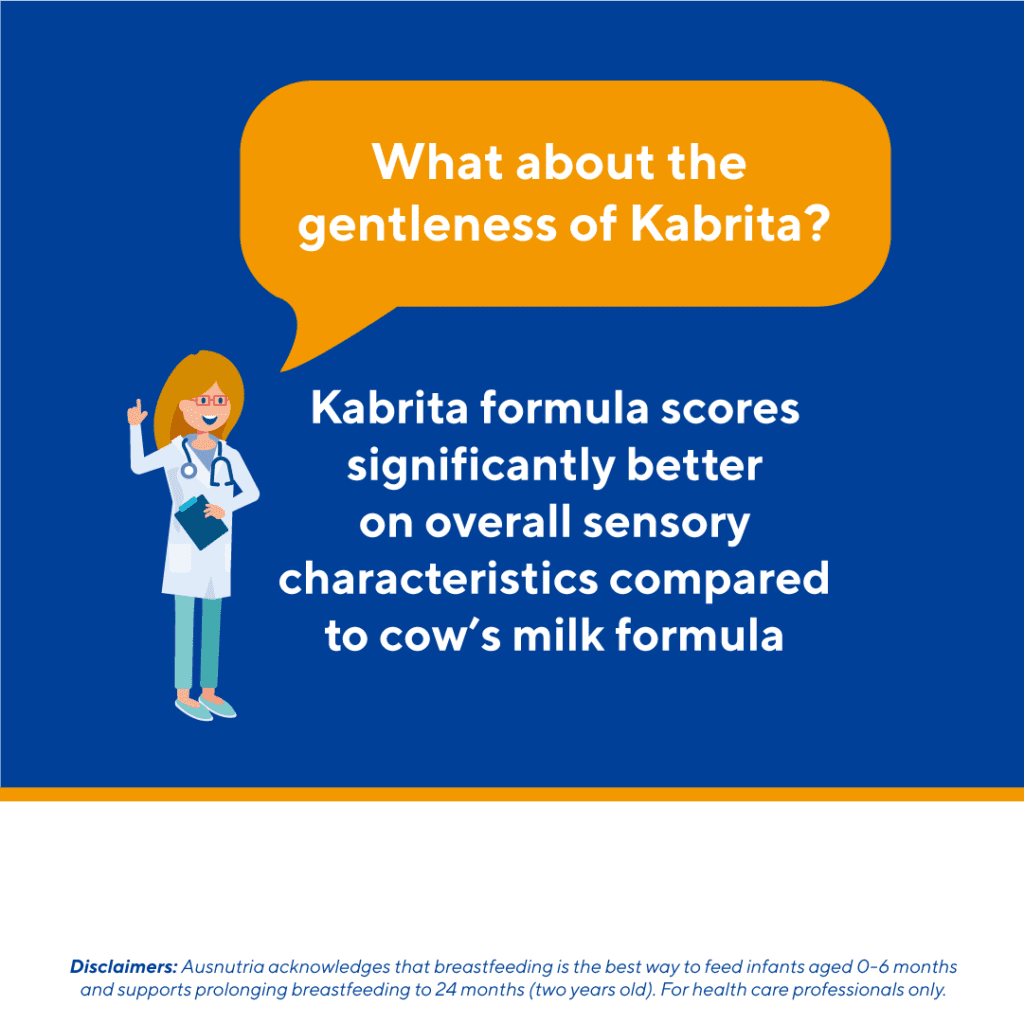
Kabrita formula scores significantly better on overall sensory characteristics compared to cow’s milk formula
Sensory analyses were performed by an independent expert panel. The results show that Kabrita formula scores significantly better on overall sensory characteristics compared to cow’s milk formula. Kabrita scores twice as high on overall sensory quality, has significantly more milky taste and significant less off-flavours. These findings support the gentleness of Kabrita.
Click here for more information about sensory characteristics.




